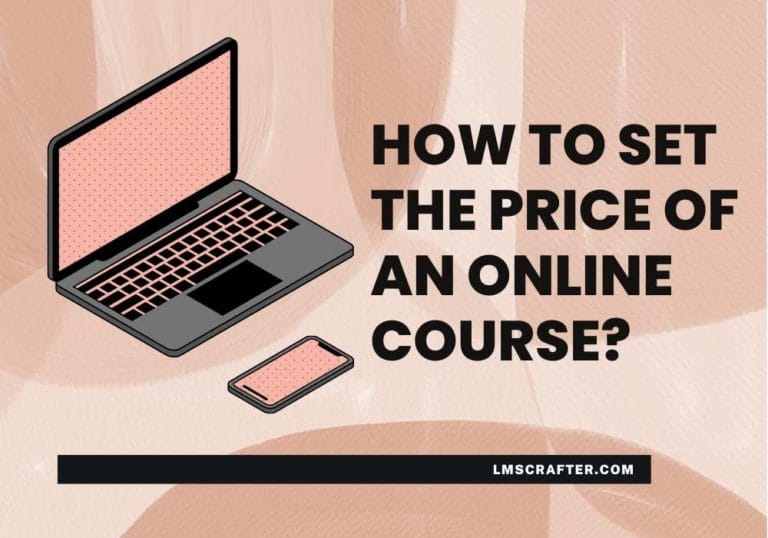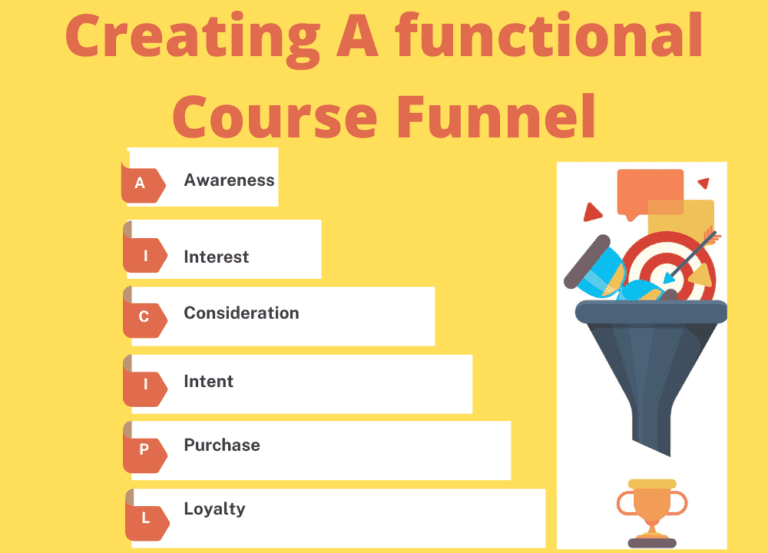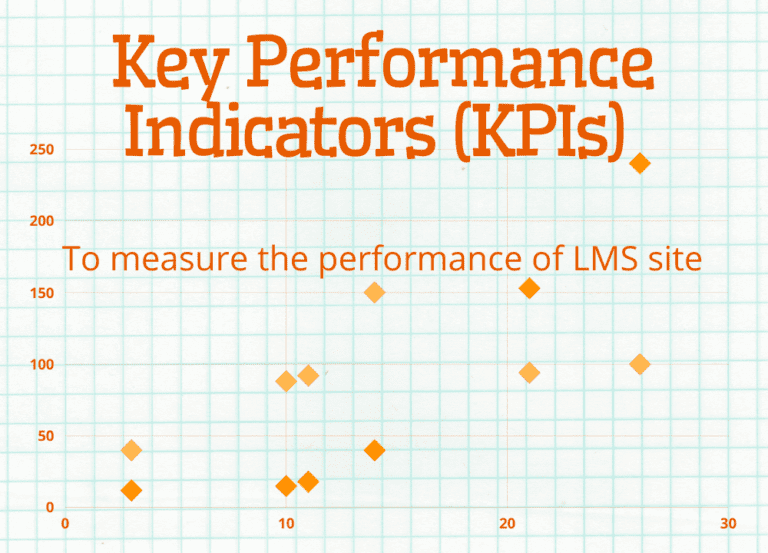7 Steps to Create an Amazing Online Course in 2024
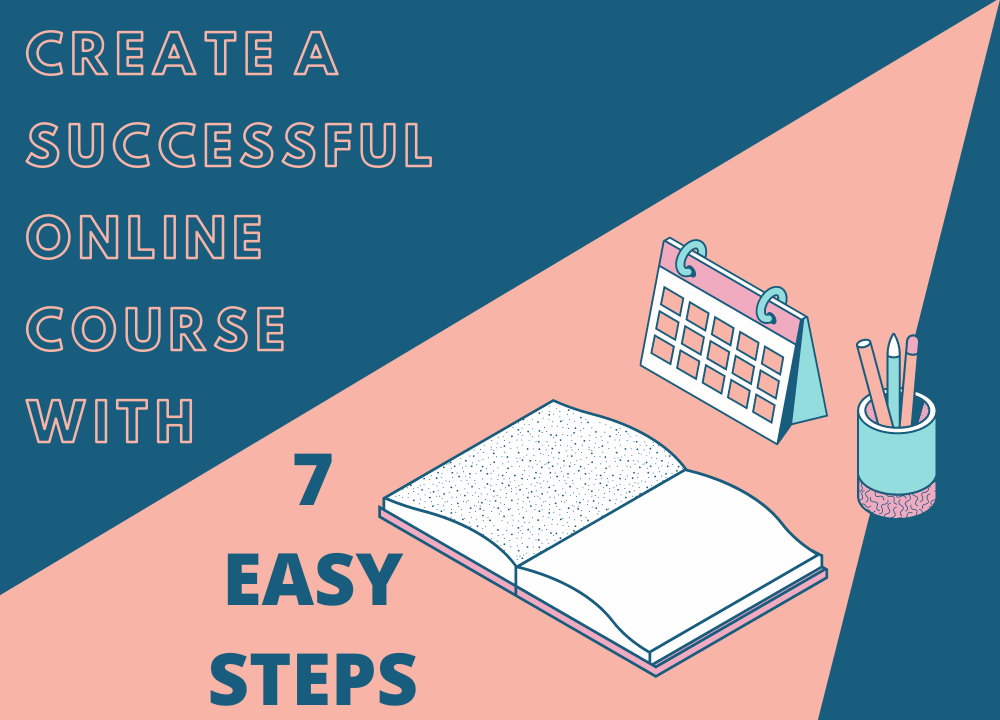
It has now become a norm to create an online course for every successful entrepreneur, thought leader and expert which helps them to bring their knowledge and expertise to the whole wide world. Online courses are not an unusual thing anymore as people want to know the steps adopted by these successful people to bring change in their lives.
The modern digital era has made information accessible to everyone then why would anyone pay to learn something? The answer is people buy courses not just to get knowledge and information, but to transform their lives by learning and implementing practical approaches. This is the reason that the online education industry is expected to quadruple in size from around $250 billion in 2020 to $1 trillion in 2027.
In this article, you will get a step by step guide to create an online course which is effective and engaging for students and actually sells.
How to Create an Online Course Successfully?
1. Identify the Best Course Topic

The first step while you begin to create an online course is to identify a topic in which you as well as other people are really interested. Write down your interests and knowledge areas in which you have the expertise and you can help others solve their problems as well. If you have a topic in which you are experienced (either formal learning or life experience), and it fulfils the needs of someone else, this is the topic to go for.
Jim Edwards, the author of Copywriting Secrets, even suggests defining an avatar of your perfect customer. Take some time and write down his personality, his needs, desires, fears, likes and dislikes. It will help you to understand whether your audience will be interested in this course idea or not.
Once you have picked a course topic, do some market research to check its demand. There are a few ways to do it,
- If you already have an audience or mailing list, you can send them surveys asking them about their most crucial issues. You can also ask them any new course ideas in which they might be interested.
- Do deep research on Google. You can also go to Google Keywords Planner and get insights into how many people are searching for the same topic. It will also give you an idea of other related keywords as well.
- If you have a social media presence, you can also ask your followers if they will be interested in this course idea.
- Visit sites like Quora and Reddit to analyze what are the most asked questions around your course topic. See what your audience is talking about? Is there any specific thing which is getting much attention? Do you see any trends around the topic?
2. Validate Your Course Topic

Once you are done with your research, there is one more step before starting to build up your course which is the validation phase. It is difficult to validate the idea just by knowing if people will be interested or not. Actual validation comes when you ask people to put money into something. This is where smoke test works.
A smoke test works when you build your landing page with a “Buy Now” button before you create an online course. You bring traffic to your landing page and see how many people actually press that button. It is similar to pre-selling your course which is done by many people before launch. Advertise your expected course on social media forums and mailing lists.
Now you just need to see how many people actually clicked and tried to buy your course. Set a target for you click-through rate. If the number of clicks meet or exceed the click-through rate, you have a successful course idea. Now you can move to actually building up your online course.
3. Outline your Online Course
Its time to make an outline of your course. An outline gives you key points about what your course will be comprised of. This is quite tricky because you will have so many ideas and plethora of information in mind as well as in books and other resources. You have to define what will be included in the course and what will not.
If you already have blogposts, webinars, social media posts, videos or whitepapers, check your most performing content and turn it into a digestible comprehensive format to create an online course. Going for an entire new content can be tiresome. If you can repurpose your existing content, it will save a lot of time and effort.
However, if you do not have an already established platform, the information you got during research phase, can help you a lot to determine what kind of information should be added or avoided. Choose the learning outcome you can support by content. Only filling in the blanks and straight forward answers are complex to transform into a full course. You must have enough content to develop the whole course.
No one will buy your course just because they like you or they love the idea. People pay real money to learn a necessary skill or to transform their lives by implementing the learning. Your course should be a guide to move from point A to point B. Always note down the key learning outcomes from the course.
Tell the audience the specific skills they will be able to learn by your course. Convey how taking your course can solve their current problems. What are the feeling they will be able to move away of achieve as a result of your course.
Once, you have the start and the desired outcome of your course, divide the whole course into sections or modules. Each module will help the student learn a specific skill or a certain part of the whole topic. These modules act as a building blocks to move from the beginning to the end result.
4. Build your Online Course

You have a blueprint of your whole course, now you just have to add the content to build on it. You can add different types of content to make your course more appealing like audios, videos, pdfs, slides, etc. Everything should be correlated and feel like the part of a big comprehensive course rather than separated single pieces.
Always choose a balanced way among different types of content and deliver it in a perfect manner. You can bring more storytelling, add quizzes, badges, certifications to make your courses more engaged. Focus on accessibility issues for the students with special needs. Make it all simple and synchronous and the information glides through all the phases seamlessly.
Another important consideration is the length of the course. Obviously, its not the sole determiner of the success when you create an online course, but it is quite important. If your course is too lengthy, the students will soon get bored. But, if it is too complex to learn during a shorter time, student may not be able to achieve their desired results.
According to Thinkfic, most profitable average course length is 10–25 hours. Just below that, 5-10 hour courses are about 75% as profitable. But, it also depends on the complexity of your course. Your students may be needed to cover a specific number of hours, if your course is certified for further education.
You mut also decide whether you will be selling your course as a standalone product or want to sell it with your membership. Do you want to offer a community feature with your course or students will be learning at a self-paced mode. How to price your course?
Setting a reasonable price for your course is quite a critical decision to make. Positioning it too high can make your potential learners leave while fixing it too low can cost you a lot of wasted money. You can check our article here to read more about effective pricing strategies for your online course. You can test your content with colleagues and relatives to make sure you are going in the right direction.
5. Finding your first Batch of learners

Now, you need to test out the course once again before launching. Your first batch of students will act as a beta group for your course testing. They will provide feedback to perform edits before the final launch.
You can also offer your course to these students for free or at a reduced price in exchange of their feedback and testimonials. After completing the course, a successful course should help them transform a certain aspect of their life. You can also provide a 1-1 session or live Q&A session to answer their queries and understand the main pain points.
If your first batch of students is happy with the learning process and outcomes of the course, congratulations, you have successfully created an online course which is ready to be launched.
6. Launch your Online Course
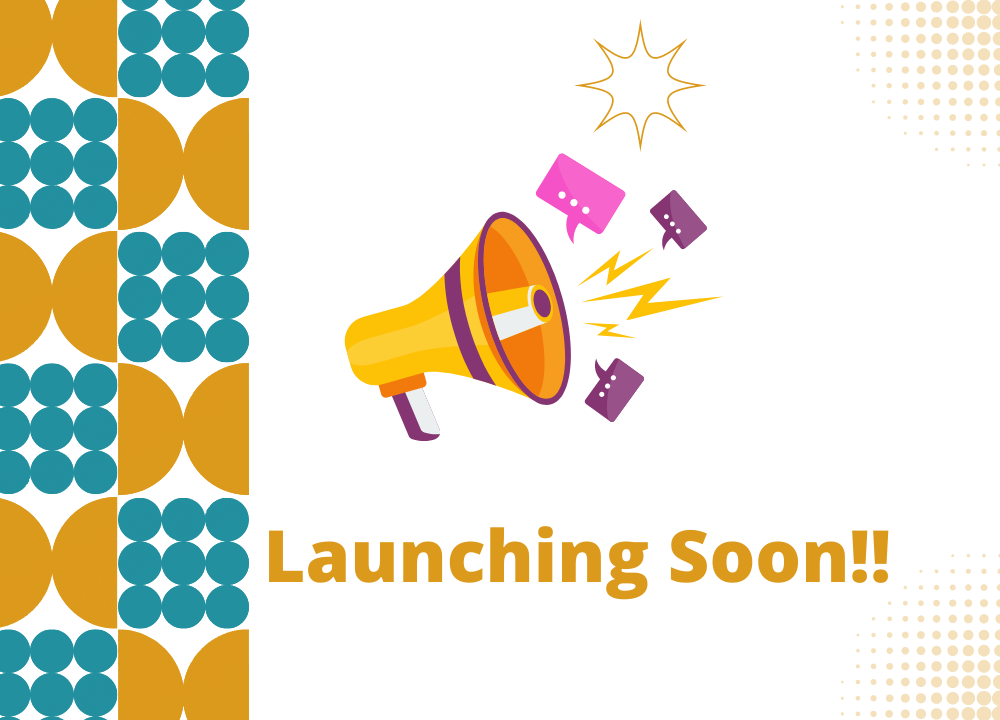
You have crafted such an awesome course with so much effort but its worthless if your prospective students can not find it. Now, its all dependent upon your marketing strategy to make sure everyone in your field is well aware of your course. Start promoting your course by,
- Writing Blog posts
- Email marketing
- Social media posts
- Digital advertisements
- Podcast interviews
- YouTube promotions
- Influencer marketing
- Affiliate programs
- Writing on Quora and guest writing
A successful launch strategy usually has four phases, pre-launch, launch trigger, launch and post-launch. You can find more about this in our article about successful launch tactics here.
If your initial launch is successful, you will not just be able to cover all the expenses but also generate a good amount of profit.
7. Build an Engaged Community

This is something which is not usually taken into consideration by the course creators. A community helps a lot to keep students engaged even after they have finished off their courses. If they can find the value mora than just reading material, they will be your potential customers next time whenever you offer anew course as well as walking testimonials who will be happy to refer your expertise to others.
When you create an online course, you can add discussion forums, Facebook groups, live Q&A sessions, live webinars etc. These help to give that sense of community to the students where they can chat with one another, ask questions and remove any confusions. It also makes the learning process much more engaging and enjoyable.
You are not only bombarding the information on the students, rather you are trying to solve their issues and help them transforming their lives. In this way you build a personal relationship with your students which is a bit difficult in virtual learning.
Last words:
It requires a lot of time and effort to create an online course amazingly, if you really want to provide value to your students. However its an investment which offers you recurring revenue over time. We hope our guides and strategies help to make the whole process a bit easy for you.
If you have any questions regarding the course creation, do tell us in the comments section. We’d be happy to help you. Keep growing…
